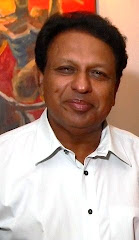Hillary's Passage to India
By T.P. Sreenivasan
India adored Edmund Hillary, a New Zealander who conquered Mount Everest in 1953 long before Hillary Clinton came on the scene. That name recognition may have contributed to Hillary Clinton being referred to as “(D-Punjab)” in a memo from Barack Obama’s campaign during their fight for the nomination. As she sets out on her journey to India today in her new capacity as secretary of state, she has as much a hazardous climb ahead of her as Sir Hillary had in the previous century.
The recent elections in India and the United States will have a profound impact on the ties between the two countries. The Bush Administration was ready for a tight embrace of India, but India shied away because of the hesitation of the leftists, who were part of the ruling coalition. But today, when India is ready to move forward with a popular mandate, it appears that it is the turn of the U.S. to backtrack. Priorities seem to have changed on the Potomac. Short-term concerns may well have overtaken the logic for building a long term relationship.
Mr. Obama and Mrs. Clinton have set the right tone with India, but it is on policy that trouble may arise. The contours of the nuclear agreement with India, in particular, do not fit neatly into the policy framework of the Democrats. In the eyes of some Obama advisers, the nuclear deal was a sellout to India and, given a choice, they would retrieve much of what was negotiated by Bush. But the Obama Administration is committed to the implementation of the deal in a way that it does not hurt the nonproliferation objectives of the U.S. India, on the other hand, wishes to consolidate the gains of the Bush era and build on them.
The next steps that each country has in mind do not coincide. The U.S. side wants India to adhere to the Convention on Supplementary Compensation for Nuclear Damages to provide liability protection to U.S. companies and announce two nuclear reactor park sites for U.S. firms. The Indians would rather tackle the modalities of reprocessing and tie up perpetuity of supplies. The latest G-8 decision to ban the transfer of enrichment and reprocessing items to non-NPT countries strikes at the very root of full civil nuclear cooperation. This move might jeopardize the talks scheduled for modalities of reprocessing. What would happen to the spent fuel from Tarapur if reprocessing is not facilitated? This partnership may end up looking like a three-legged race in which two athletes are tethered together but incapable of deploying their collective strength.
The path to a world without nuclear weapons that Mr. Obama delineates is also different from the Indian vision. He sees the nuclear Non-Proliferation Treaty (NPT), Comprehensive Test Ban Treaty and the Fissile Material Cutoff Treaty as the major milestones in this journey. India can hardly afford to embrace these as it has to preserve and protect its minimum deterrent against real and immediate threats.
Other tensions are brewing as well: Indian industry has anxieties over Mr. Obama’s emphasis on moving jobs from Bangalore to Buffalo, when the market forces dictate movement in the opposite direction. Skills developed in India and facilities set up exclusively for the U.S. market should not become monuments of failed theories of globalization.
War on terror is a common responsibility for the U.S. and India and a primary area of cooperation. But the biggest perpetrator of terror on India is also the chief fighter of terrorism for the U.S. The U.S will not talk to terrorists, but it wants India to keep talking to Pakistan even after the horror in Mumbai. Moreover, the U.S. persists with old solutions for new problems such as propping up regimes with dollar infusions. Mrs. Clinton will face questions in India as to what guarantees the U.S. has extracted about the end use of the lethal weapons that are gifted to Pakistan.
At the G-8 summit earlier this month, India once again called for the reform of the Security Council as an imperative for equity in the new international matrix. As though in anticipation, Mrs. Clinton made the tantalizing offer “to cooperate with New Delhi as it shoulders the responsibilities that accompany its new position of global leadership.” She should know that nothing short of a commitment to expand the permanent membership of the Security Council on objective criteria such as population and constructive contributions will meet the aspirations of New Delhi. If she can make that commitment, she needs to do nothing else to make the visit historic. Signing some agreements or setting up commissions will not have the same impact.
Sir Hillary did not climb Everest by himself. He shared his moment of glory with an Indian, Tenzing Norgay, whose contribution may well have been as significant. Mrs. Clinton will have the same support if she is willing to share the view from the summit with her Indian counterpart, S.M. Krishna, by no means a novice in statesmanship.
Mr. Sreenivasan is a visiting fellow at the Brookings Istitution in Washington. He was India’s deputy ambassador to the U.S. from 1997 to 2000 and permanent representative to the United Nations from 2000 to 2004.
Wednesday, July 15, 2009
Subscribe to:
Post Comments (Atom)

No comments:
Post a Comment